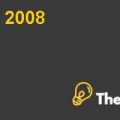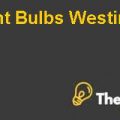Kennecott Copper Corporation Case Study Solution
Motivations behind another Acquisition
After the divestment of the Peabody, the management were considering another opportunity in form of acquisition of Carborundum. Motivations behind considering another opportunity was the search for diversification in order to gain consistent profits that is the main objective of the company. Although, the divestment of the Peabody leads the company to face certain losses, which ultimately demotivated the management and the shareholders about the acquisition.
However, the divestment of Peabody was due to the external factors including the political pressures that are uncontrollable by the company. Moreover, after the divestment of Peabody the company requires a potential replacement of Peabody in order to achieve its long term objectives. All of these points with the historical fluctuations in the Copper prices lead the management to consider another opportunity in the coal industry.
Evaluation of the Synergies
The Carborundum opportunity would bring certain form of synergies that could benefit the company. Three different form of synergies could be seen in the Carborundum opportunity. One of the major synergies created by the Carborundum opportunity includes the utilization of the $40 million of the tax losses that were made available by various other operations of the company. Moreover, another synergy includes the realization of the benefits related to tax due to the write-up of the Carborundum assets. Along with it, the profit retention requirements of Carborundum would be reduced after the acquisition that also shows an implied potential synergy for Kennecott.
A synergy valuation has been conducted on the basis of certain assumptions and the given data in the case study, provided in the Exhibit 1. The synergies has been discounted at a rate of 12% that is the WACC of the company. On the basis of the synergy valuation, the synergies would contribute a value of $151 million in the company.
Maximization of the Shareholder’s Value
Indeed, the management at Kennecott Corporation was putting efforts to maximize the shareholders’ wealth and was consistent with the best interests of the shareholders.Although, the cash distributions policy adopted by the management after the divestment of Peabody was not in the best interests of shareholders, however, the acquisition of Peabody in order to diversify the business was in the best interests of the shareholders.
Moreover, the acquisition of Carborundum considered by the management would also increase the shareholders’ value. On the basis of the valuation of Carborundum, provided in the Exhibit 2, conducted on the basis of certain assumptions and provided information, it could be seen that the per share value of Carborundum would be $64 and $83 without and with synergies respectively. The acquisition of Carborundum would not only allow the business to achieve its strategic objective of diversification, but, it would also maximize the shareholders’ wealth. Therefore, it could be said that the management is consistent with the best interests of the shareholders.
However, the interests of management and shareholders are diverged at a point of the long term existence of the firm and the market value of share. The shareholders demand high market value of the shares without any concerns over the long term existence of the company. However, the management requires the long term existence of the company to keep receiving their benefits in terms of remuneration and salary.
Major Developments at Kennecott
Since the time of the case, several developments occurred at Kennecott including the proxy fight over the Carborundum acquisition, the selection of Senior Vice President Exxon as the new CEO of Kennecott Corporation in 1981, the acquisition of Standard Oil company by Barrow in the same year for $1.8 billion, merger of RTZ, the parent company of Kennecott Corporation with CRA Limited of Australia with an aim to form the largest mining company of the world. All of these actions resulted in potential changes at Kennecott Corporation and was the resultant of the management’s efforts at Kennecott.
Conclusion
Although, the Peabody acquisition was one of the major failures of the Kennecott Corporation which resulted in the further decline of the shareholders’ value at Kennecott, however, the acquisition ended with divestment due to the political pressures and the due to the poor earnings of the Peabody. The failure of Peabody acquisition does not implies that the company should stop acquisition companies outside the copper industry, as the only way to achieve diversification, that ultimately lead to consistent profits, is to acquire companies outside the copper industry. Moreover, the acquisition of Carborundum also shows that the management at Kennecott is consistent with the best interests of the shareholders as the Carborundum would maximize the shareholders’’ value at Kennecott.
Exhibits
Exhibit-1: Synergy Valuation
| Synergy Valuation | ||||||||||
| 1978 | 1979 | 1980 | 1981 | 1982 | 1983 | 1984 | 1985 | 1986 | 1987 | |
| Utilization of $ 40m tax credit | 20.0 | 20.0 | ||||||||
| Tax benefit from write-up of Carborundum asset | 2.8 | 2.8 | 2.8 | 2.8 | 2.8 | 2.8 | 2.8 | 2.8 | 2.8 | 2.8 |
| Synergy reflected from extra dividend | ||||||||||
| Net income after deal | 31.8 | 38.8 | 46.8 | 56.6 | 70.1 | 77.7 | 86.0 | 95.1 | 105 | 116 |
| Dividend pay-out ratio after deal | 1.0 | 0.1 | 0.4 | 0.6 | 0.7 | 0.6 | 0.6 | 0.6 | 0.6 | 0.6 |
| Dividend post deal | 31.8 | 4.7 | 20.6 | 31.1 | 45.6 | 45.1 | 49.0 | 54.2 | 60.0 | 66.2 |
| Net income before deal (Ex 5) | 43.1 | 50.7 | 60.1 | 70.6 | 84.7 | |||||
| Dividend pay-out before deal | 0.3 | 0.3 | 0.3 | 0.3 | 0.2 | 0.3 | 0.3 | 0.3 | 0.3 | 0.3 |
| Dividend pre deal | 10.8 | 12.7 | 15.0 | 17.7 | 20.3 | 19.4 | 21.5 | 23.8 | 26.3 | 29.1 |
| Extra dividend as a result of acquisition | 21.0 | -8.0 | 5.6 | 13.5 | 25.2 | 25.6 | 27.5 | 30.4 | 33.7 | 37.2 |
| Total Synergies | 43.8 | 14.8 | 8.4 | 16.3 | 28.0 | 28.4 | 30.3 | 33.2 | 36.5 | 40.0 |
| Discount Rate | 12% | |||||||||
| Total Value of Synergies | 151 | |||||||||
Exhibit-2: Carborundum Valuation
| Carborundum Valuation | ||||||||||
| 1978 | 1979 | 1980 | 1981 | 1982 | 1983 | 1984 | 1985 | 1986 | 1987 | |
| Net Income | 32 | 38 | 47 | 57 | 71 | 78 | 86 | 95 | 105 | 116 |
| PPE | 334 | 367 | 385 | 400 | 412 | 438 | 467 | 499 | 536 | 576 |
| Net Change of PPE | -28 | -33 | -17 | -16 | -12 | -26 | -29 | -33 | -37 | -41 |
| NWC | 203 | 223 | 248 | 274 | 303 | 329 | 359 | 391 | 426 | 465 |
| Net change in NWC | -7 | -20 | -25 | -26 | -29 | -27 | -29 | -32 | -35 | -39 |
| Increase in LT debt (issuance-repayment) | 35 | 18 | 14 | 14 | 13 | 18 | 20 | 22 | 25 | 27 |
| Free cash flow to Equity | 31 | 3 | 19 | 29 | 44 | 43 | 47 | 52 | 58 | 64 |
| PV | 192 | |||||||||
| Terminal Value | 336 | |||||||||
| Total Equity Value (with synergies) | 528 | |||||||||
| Total Equity Value (with synergies) | 678 | |||||||||
| Outstanding Shares | 8 | |||||||||
| Value per share (without synergies) | 64 | |||||||||
| Value per share (with synergies) | 83 | |||||||||
This is just a sample partical work. Please place the order on the website to get your own originally done case solution.
How We Work?
Just email us your case materials and instructions to order@thecasesolutions.com and confirm your order by making the payment here













